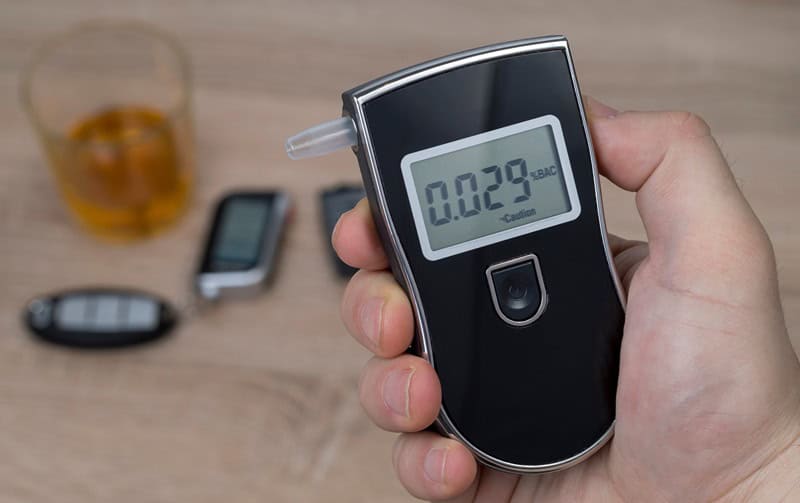
Feature Article
The Science and Strategy Behind Rising Blood Alcohol Defense in DUI Cases
Getting arrested for driving under the influence (DUI) can be a frightening and overwhelming experience, but there are ways to challenge the charges against you. One such defense strategy is known as the "rising blood alcohol" defense. This defense argues that at the time of driving, your blood alcohol level was below the legal limit, but by the time you were tested, it had risen above the limit due to the physiological process of alcohol absorption. In this feature article, we will examine the science and strategy behind the rising blood alcohol defense in DUI cases.
1. Understanding Blood Alcohol Concentration (BAC)
The first step in understanding the rising blood alcohol defense is to understand blood alcohol concentration (BAC). BAC is the amount of alcohol present in a person's bloodstream and is measured as a percentage. In the United States, the legal limit for BAC while driving is 0.08% for drivers over 21 years old. For drivers under 21, any amount of alcohol in their system is illegal while driving.
BAC can be affected by many factors, including the type and amount of alcohol consumed, the time period over which it was consumed, and the person's body weight, gender, and metabolism. It is important to note that BAC does not correlate with how drunk a person feels or how impaired their driving may be.
2. The Process of Alcohol Absorption
When a person drinks alcohol, it enters their stomach and small intestine, where it is absorbed into the bloodstream. Once in the bloodstream, the alcohol is carried to the liver, where it is metabolized and eventually eliminated from the body.
However, the process of alcohol absorption is not instantaneous. Instead, it takes time for the alcohol to be absorbed through the stomach and small intestine walls and reach its maximum concentration in the bloodstream. During this period, the person's BAC may continue to rise, even if they have stopped drinking.
3. The Science Behind Rising Blood Alcohol Defense
The rising blood alcohol defense argues that at the time of driving, the defendant's BAC was below the legal limit, but by the time they were tested, their BAC had risen above the limit due to the ongoing process of alcohol absorption. For example, suppose a person had two drinks in an hour and then immediately got behind the wheel. In that case, their BAC would still be rising, and if tested within the hour, their BAC might be below the legal limit. However, if tested an hour later, their BAC might be above the limit despite the fact that they were not actually over the limit at the time of driving.
This defense can be challenging to prove in court, as it requires scientific evidence to demonstrate the timing of the alcohol absorption process. Still, if successful, this can result in reduced charges or even a dismissal of the case.
4. The Importance of Time in Rising Blood Alcohol Defense
The rising blood alcohol defense hinges heavily on the concept of time, as it is the time elapsed between drinking and testing that determines whether a person's BAC is rising or falling. The longer the time between drinking and testing, the more likely it is that a person's BAC will have risen above the legal limit.
Defense attorneys can use this to their advantage by requesting a delay in testing or arguing that the testing was done too long after the alleged driving offense to be accurate. They can also point out factors such as eating, drinking water, or taking medication that affected the absorption process and resulted in a higher BAC.
5. The Importance of Expert Testimony in Rising Blood Alcohol Defense
Successfully arguing the rising blood alcohol defense requires expert testimony from a qualified forensic toxicologist or physician. These experts can provide scientific evidence and testimony on the absorption and metabolism of alcohol in the body, the margin of error of breathalyzer tests, and factors that can affect BAC levels.
Expert testimony can also be used to challenge the prosecution's evidence and demonstrate that a person's BAC did not exceed the legal limit at the time of driving, even if it did when they were tested.
6. The Potential Benefits and Limitations of Rising Blood Alcohol Defense
Rising blood alcohol defense can be a powerful strategy in DUI cases, potentially resulting in reduced charges or even the dismissal of the case. Additionally, it can highlight the scientific limitations of breathalyzer tests and emphasize the importance of accurate testing and expert testimony in DUI cases.
However, the rising blood alcohol defense is not foolproof, and the success of the defense relies heavily on the availability and accuracy of scientific evidence. It is also important to note that even if a defendant's BAC was below the legal limit at the time of driving, they may still face charges for impairment or reckless driving if their driving behavior was unsafe or erratic.
7. Conclusion
The rising blood alcohol defense is a complex and challenging DUI defense strategy that requires scientific evidence and expert testimony. The defense argues that a person's BAC was rising at the time of testing and therefore may have been below the legal limit at the time of driving. If successful, this defense can result in reduced charges or a dismissal of the case. However, the success of the defense relies heavily on the availability and accuracy of scientific evidence and the timing of testing. In any DUI case, it is important to consult with an experienced DUI defense attorney to discuss your options and potential defenses.
For more information on the rising blood alcohol defense, visit arjashahlaw.com.

0 Comments